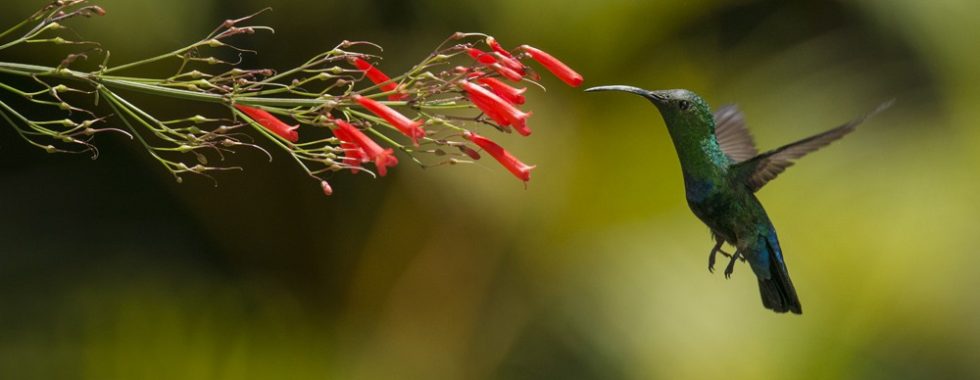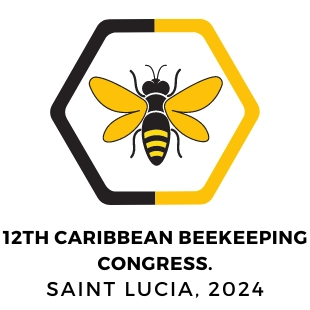Why is pollination so important?
Some basics
Pollination is a feature of angiosperms, or flowering plants. More than 90% of the 250,000 species of modern flowering plants and 65% of all plant species are pollinated by animals (Kearns, Inouye and Waser 1998). In fact, as much as 94% of plant communities in the tropics are estimated to be pollinated by animals (Ollerton, Winfree and Tarrant 2011).
Pollination is the transfer of pollen grains from the male parts of the flower, the anther, to the female parts of the flower, the stigma. Pollination can occur between flowers on the same plant (either the same flower or different flowers), which is called self-pollination. When pollen is transferred from the flower of one plant to the flower of another plant of the same species, it is known as cross-pollination. The pollen grains of each plant species have very distinct shapes, sizes and compositions, similar to fingerprints in humans, which ensures that only pollen grains of the same species can germinate on the stigma.
Pollen grains can be carried from flower to flower by wind or by animals. A large number of species have been known to pollinate flowers, including bees, flies, wasps, butterflies, moths, beetles, and ants. Larger species also become involved – birds and bats are well known for their contributions to pollination, other species, such as some lizards, various species of rodents, lemurs, and bears are also among the pollinators. Animal pollinated plants usually produce large, fragrant, colourful flowers to attract pollinators and often offer a reward such as nectar. Wind pollinated flowers on the other hand are usually small and inconspicuous. Pollen grains of animal pollinated flowers tend to be large and sticky and produced in moderate quantities, whereas wind pollinated plants spend their resources producing large quantities of small, smooth and lightweight pollen grains that are easily carried by air currents.
Why is pollination important to plants?
In short, genetic diversity. The general rule is the more diverse the better. A population of high genetic diversity can survive a wider range of threats and changing conditions than a population of low genetic diversity. Within high diversity populations, there is a greater chance that at least a handful of individuals carry some traits that make them sufficiently adapted to the new conditions, allowing them to reproduce and maintain the species. While flowering plants are able to reproduce asexually by producing clones of themselves, sexual reproduction, involving pollination and the subsequent production of seeds and fruits, results in greater diversity even when self-pollination occurs. Cross-pollination further increases this diversity as genetic material from two different parent plants is combined.
What is an ecosystem service?
Pollination is a service that animals provide. Humans depend on living organisms and their physical environment to survive. These benefits that people obtain from their environment are called ecosystem services, all of which fit into at least one of four categories: provisioning services (those that provide physical benefits, eg. food, water, fibre), supporting services (those that maintain other ecosystem services, such as nutrient cycling), regulating services (those that maintain the balance in ecosystems, eg. erosion prevention and climate regulation), and cultural services (those that provide people with benefits such as relaxation, and spiritual and recreational opportunities).
So why is pollination so important?
Pollination is sometimes considered a supporting service and sometimes a regulating service. Pollination not only results in the production of fruits, seeds, and subsequent plants that are produced from agriculture and for the purpose of feeding livestock, but maintains and increases diversity within and between native species of plants. These plants are then also sometimes used by humans for medicinal purposes, building materials, fiber for clothing, and other uses. As pollination increases the diversity within plant species, pollination potentially supports the emergence of new compounds that may be useful in food or medicine. Plants, especially trees, also prevent erosion and flooding, maintain water quality, absorb and store carbon, release oxygen, and cycle nutrients, among the many other ecosystem services that they provide.
A wide range of other animals also benefit from pollination. The reproduction of plants results in food and habitat for animal species, which in turn play their own roles in food webs and the environment at large. Additionally, humans benefit from this through activities such as recreation, hunting, and fishing. Pollinators are crucial to maintaining indigenous flora and fauna. Many people value nature and its diversity for spiritual reasons, all of which is supported by pollinators.
Many pollinating species also directly produce other products for human consumption, such as honey, wax, and propolis.
Why worry?
Pollinator populations are declining rapidly on a global scale; this is often referred to as the global pollination crisis. Pollinators are essential for the production of a wide variety of food that humans consume. Due to a growing human population, pollinators are now needed more than ever to support agriculture. The loss of pollinators can not only lead to a food shortage, but also a nutrition shortage, as many crops that contain a wide variety of nutrients that humans depend on require animal pollination. Some of the threats include excessive use of pesticides; habitat destruction, including quarrying, clearing land for housing and logging; invasive species; and climate change – among many others.
Furthermore, due to a lack of data, particularly in the Caribbean, identifying strategies to conserve pollinator species is difficult, if not impossible. As a result, we urgently need to take steps to identify our local pollinating species and design policies, projects, and programmes to protect and better manage our species.
What’s next?
In this pollination corner, we will discuss a variety of aspects pertaining to pollinators, including their diversity, behaviour, biology, ecology, and how to identify them. Additionally, we will have a closer look at the pollination service at large – what the threats are, what conservation measures can be taken, what persons can do at home to protect pollinators, and how everyone can become involved.
References
Kearns, Carol A., David W. Inouye, and Nickolas M. Waser. “Endangered mutualisms: the conservation of plant-pollinator interactions.” Annual review of ecology and systematics 29, no. 1 (1998): 83-112.
Ollerton, Jeff, Rachael Winfree, and Sam Tarrant. “How many flowering plants are pollinated by animals?.” Oikos 120, no. 3 (2011): 321-326.


